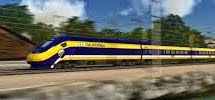BSE Down at 25,006.98, NSE Down at 7,454.15
Hindalco, Tata Power, Tata Motors, Tata Steel, Larsen, ONGC, Axis Bank, TCS,
BHEL, Hero Motocorp, HDFC Bank,
M&M
BSE Top Gainer Among All Stocks:
Hindalco
Volume Traded : 778778 shares
BSE Top Losers:
Infosys, HUL, Wipro, Sesa Sterlite, Coal India, HDFC, ICICI Bank, Cipla, Bharti Airtel, NTPC, Dr Reddys Labs, Reliance, Sun Pharma, Bajaj Auto, SBI, ITC, Maruti Suzuki,
GAIL
BSE Top Loser Among All Stocks:
Infosys
Volume Traded : 79627 shares
NSE Top Gainers:
Hindalco, Asian Paints, PNB, Tata Power, Tata Steel, Tata Motors, Bank of Baroda, ONGC,
United Spirits, Axis Bank, BHEL, Larsen, BPCL, TCS, Jindal Steel, UltraTechCement, Power Grid Corp, NMDC, HDFC Bank, Lupin, Ambuja Cements, Hero Motocorp, M&M, Maruti Suzuki
NSE Top Losers:
HCL Tech, Infosys, HUL, Wipro, ACC, Cairn India, NTPC, Coal India, DLF, Sesa Sterlite,
Bharti Airtel, ICICI Bank, IDFC, Sun Pharma, Cipla, HDFC, SBI, Tech Mahindra, Reliance,
Grasim, Kotak Mahindra, Bajaj Auto, ITC, GAIL, Dr Reddys Labs, IndusInd Bank
NSE Top Loser Among All Stocks:
HCL Tech
Volume Traded : 1636171 shares
The market closed lower for the fifth consecutive session on Monday. The Sensex fell 17.37 points to 25006.98 and the Nifty lost 5.45 points to 7454.15.
The S&P BSE Sensex provisionally ended marginally above 25000 on Monday, led by losses in Infosys, HUL, HDFC, ICICI Bank and WiproBSE -2.19 %.
Tracking the momentum, the 50-share Nifty index also managed to recover most of its intraday losses and closed above its crucial psychological support level of 7,450.
The BSE Sensex closed 0.07 per cent lower or 17 points at 25006.98. It hit a low of 24,892.00 and a high of 25,095.76 in trade today.
The 50-share Nifty index ended 0.07 per cent lower or 5.45 points at 7454. It hit a low of 7422.15 and a high of 7478.45 in trade today.
BSE Top Gainers:The S&P BSE Sensex provisionally ended marginally above 25000 on Monday, led by losses in Infosys, HUL, HDFC, ICICI Bank and WiproBSE -2.19 %.
Tracking the momentum, the 50-share Nifty index also managed to recover most of its intraday losses and closed above its crucial psychological support level of 7,450.
The BSE Sensex closed 0.07 per cent lower or 17 points at 25006.98. It hit a low of 24,892.00 and a high of 25,095.76 in trade today.
The 50-share Nifty index ended 0.07 per cent lower or 5.45 points at 7454. It hit a low of 7422.15 and a high of 7478.45 in trade today.
Hindalco, Tata Power, Tata Motors, Tata Steel, Larsen, ONGC, Axis Bank, TCS,
BHEL, Hero Motocorp, HDFC Bank,
M&M
BSE Top Gainer Among All Stocks:
Hindalco
Volume Traded : 778778 shares
Infosys, HUL, Wipro, Sesa Sterlite, Coal India, HDFC, ICICI Bank, Cipla, Bharti Airtel, NTPC, Dr Reddys Labs, Reliance, Sun Pharma, Bajaj Auto, SBI, ITC, Maruti Suzuki,
GAIL
BSE Top Loser Among All Stocks:
Infosys
Volume Traded : 79627 shares
NSE Top Gainers:
Hindalco, Asian Paints, PNB, Tata Power, Tata Steel, Tata Motors, Bank of Baroda, ONGC,
United Spirits, Axis Bank, BHEL, Larsen, BPCL, TCS, Jindal Steel, UltraTechCement, Power Grid Corp, NMDC, HDFC Bank, Lupin, Ambuja Cements, Hero Motocorp, M&M, Maruti Suzuki
NSE Top Losers:
HCL Tech, Infosys, HUL, Wipro, ACC, Cairn India, NTPC, Coal India, DLF, Sesa Sterlite,
Bharti Airtel, ICICI Bank, IDFC, Sun Pharma, Cipla, HDFC, SBI, Tech Mahindra, Reliance,
Grasim, Kotak Mahindra, Bajaj Auto, ITC, GAIL, Dr Reddys Labs, IndusInd Bank
NSE Top Loser Among All Stocks:
HCL Tech
Volume Traded : 1636171 shares







